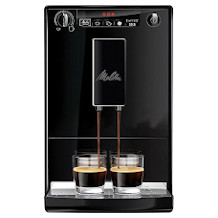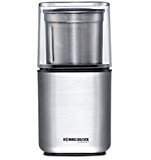Coffee machine purchasing advice: how to choose the right product
- What you need to know
- The filter coffee machine is still the first choice in many households: water, filter, and coffee powder— that’s all it takes for the popular hot drink.
- Coffee machines with an integrated grinder ensure fresh flavor before each brewing.
- With a filter machine, it is possible to prepare larger quantities of coffee at once. Models with two pots are particularly practical.
- Useful additional functions such as a timer to automatically start the brewing or a drip stop that can be used to interrupt the process at any time, increase the comfort level.
Antique or classic with cult factor?
Coffee is one of the most popular drinks worldwide. The United States come in on fifth place in overall coffee consumption with approximately six million 132 pounds (60kg) bags per year. Surprisingly, the top four countries that consume the most cups per capita per day are all in Northern Europe, namely Finland (4 cups), Norway (3 cups), Denmark (2 cups), and Iceland (2 cups). The coffeinated hot beverage comes in many varieties and is especially valued for its stimulating effect.
The days of coffee as an exclusive delicacy for the crème de la crème are long gone. It was once served in specially equipped coffee houses, which grew into well-visited meeting places for artists, philosophers, and scientists. By now, coffee can also be prepared easily and conveniently at home; the wake-up drink that was once reserved for a few connoisseurs has had a stellar career as a beverage for the masses. Thanks to the invigorating cup in the morning, many people start a new day with vigor. In addition to the vitalizing effect, the social component also plays a role, be it in the afternoon with cake, in a short coffee break with colleagues or as the crowning conclusion to a sumptuous dinner.
Fill the filter, pour water in the tank, switch on the machine, and after just a few minutes the roasty aroma of freshly brewed coffee spreads through the room. Despite the variety of coffee drinks, such as cappuccino or latte macchiato, and alternatives, from capsule machines to French presses, this classic is still very popular in many households. This is also due to the fact that some models now come with integrated grinders that compete with fully automatic coffee machines in terms of taste. New features such as a timer increase convenience, which allows consumers to enjoy the longed-for cup of coffee directly after getting up in the morning without having to fiddle with powder and filter early in the morning.
Uncomplicated, inexpensive, fast: the revival of the filter coffee machine
Next to all the modern ways of brewing coffee, filtering is the classic option that has been in use for many decades. Many purists remain loyal to the former queen among coffee machines. Compared to capsule machines, filter machines are not only cheaper to buy, but also have significantly lower follow-up costs: while users of a capsule machine pay between 30 and 60 cents per cup, a cup of filter coffee costs just seven to ten cents. Another advantage: filter coffee machines have a better environmental balance than capsule and pad machines — especially when using a permanent filter. Unlike most coffee machines, they are also very easy to operate and maintain. However, users of a filter machine have to do without coffee specialties such as cappuccino or latte macchiato.
Those who value a certain range of program functions are now offered practical features such as a timer. This time-saving feature is particularly helpful in situations where users are in a hurry, because it takes a comparatively long time to prepare a single cup of filter coffee. With an integrated grinder, the coffee machines even grind fresh beans automatically, in portions and with a gentle aroma.
Since the machines can prepare a large quantity, namely eight to twelve cups, in one run, filter coffee machines are particularly suitable for frequent drinkers, families, and offices. Almost all models also have either a thermos or a heating plate that keeps the coffee warm for a longer period of time. The water reservoir is usually easy to remove and clean. Equipped with a filter, it prevents calcification and other deposits.
Advantages
- Preparation of large quantities at once
- Hardly any waste (when using permanent filters)
- Easy operation, maintenance and cleaning
- Low acquisition and follow-up costs
- With integrated grinder fresh beans can be used
- Time saving by pre-programming with the help of a timer
Disadvantages
- No coffee specialities possible
- Comparatively long preparation time
Manufacturers and prices: who brews the best coffee?
The market for coffee machines is hotly contested. While some companies specialize in fully automatic machines or espresso machines, others mainly design filter machines. The best-known manufacturers of coffee machines include Bosch, DeLonghi, Jura, Krups, Melitta, Petra, Philips, Senseo, Siemens, Tchibo, and WMF. Filter machines don’t necessarily have to be expensive for the coffee to taste good. Solid machines without technical gadgets are available for as little as $25. High-quality machines, on the other hand, start at around $50.
If extras such as a timer or a descaling program are included, buyers must expect significantly higher costs of up to $100 for a coffee machine. The more options the coffee machine offers, the more expensive it will be. Models with their own grinder and a wide range of functions have a price range of between $120 and $150. High-quality, high-end models cost up to $300.
The different types
Filter machines basically all work according to the same principle. Unlike when brewing by hand, consumers don’t have to keep adding hot water; the coffee machine does this automatically. Users first place a filter in the swivelling filter holder, put the desired amount of coffee powder in it, and then fill the water container with water. A pot is placed under the filter. In some models, the brewed coffee collects in an insulated pot that keeps it warm. Other models have a heating plate on which a heat-resistant glass pot is placed, so that the coffee is kept at a steady temperature — more consistent, but associated with electricity costs.
After switching on, the water runs from the tank through a downpipe into the boiler. There, it is heated to between 196 and 205 °F (91 and 96 °C) by a heating coil and then pumped through a riser pipe into the filter with steam pressure. Filter machines therefore use nothing more than the pressure that is generated when cold water is heated quickly. The water then seeps through the coffee powder in the filter in individual spurts, along with the characteristic gurgling and hissing sounds. In the course of this process, all essential flavors and bitter substances are extracted from the powder.
Freshly ground and double portioned
Although all filter coffee machines work according to the same basic principle, there are still special features. A distinction is made between machines with and without a grinder and models with one or two pots.
Filter machines with a grinder
The fresher the coffee powder, the more aromatic the resulting product. A coffee machine with an integrated grinder above the filter ensures freshly ground coffee at all times. This eliminates the need for tedious grinding by a separate coffee grinder. The machines grind the beans immediately before brewing. Users select the degree of grinding and the number of cups via a display or control keypad. The appropriate amount of powder is then added to the filter. Apart from this, a coffee machine with a grinder works exactly like a classic filter machine in terms of its brewing process. Usually, it is also possible to use coffee powder with most models with a grinder. This means that consumers can use the machine even if they don’t have any beans at hand, but only powder.
A distinction should be made between ceramic and steel grinders: while ceramic grinders last longer, don’t heat up as much, and are quieter, steel grinders are cheaper and more robust but also noisier; they also heat up more than their ceramic counterparts, which results in changes in taste. For everyday use, the cheaper steel grinders are sufficient.
Grinders differ not only in terms of the materials they are made of, but also in terms of how they function. Depending on the technology used, the grinders achieve varying results, which interested parties should be aware of before buying.
A distinction is made between the following designs:
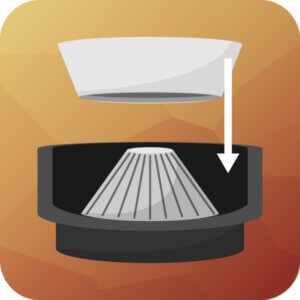
Conical grinder
The noisy conical grinders grind the beans between the lower cone-like component and the upper funnel-like component, whereby the distance between the two components determines the degree of grinding. The smaller the distance, the finer the powder. Despite the relatively large grinding surface, conical grinders require little space in the machine. The lower speed also means that there is no intense heat that could affect the aroma.

Disc grinder
Disc grinders are not only cheaper, but also quieter. They consist of two discs, one on top of the other, which rotate in opposite directions to each other and grind the beans in the process. The centrifugal force transports the powder outwards, which results in a very even, fine grinding pattern. Here, too, the distance between the components determines the degree of grinding. Compared to conical grinders, disc grinders not only require more space in the machine, but also heat up more due to the higher speed.

Blade grinder
Because of the two blades that grind the beans by rotation, blade grinders are reminiscent of blenders. Although they are cheap and easy to clean, it is not possible to set different degrees of grinding. In addition, they heat up so much that some aroma is lost. Since this results in a very uneven grinding pattern, impact grinders are hardly ever used any more.
Filter machines with two pots
For frequent drinkers, offices, and restaurants that require particularly large quantities, there are now machines with a double thermos pot. Duo coffee machines take up more space than machines with a single pot, but users benefit from twice the amount of coffee per brewing process. This also proves practical when many guests are visiting. These machines usually have two separate heating systems and water tanks, so that both sides can be switched on independently. Apart from the mere duplication of all components and processes, making coffee is the same as with an ordinary filter machine.
With a double coffee machine, consumers can ideally prepare not only coffee but also tea. To do this, they place a special tea strainer, which is often already included in the scope of delivery, in the device. This way, they can prepare coffee and tea separately at the same time, which is not only convenient but also saves time.
The most important purchase criteria
Many small details in the grinding and brewing process determine the taste nuances of the coffee, its smell, its consistency, the aftertaste, and the mouthfeel. To ensure that the buyer and the machine are ideally suited to each other, it is important to consider some basic characteristics of different models. There are differences not only in the design, but also in the capacity, the type of pot, and the type of filter. Depending on their individual usage behavior, consumers may have their own specific requirements for the machine.
From drop to gush: the brewing system
In cheaper coffee machines, an airlift pump is used, in which cold water runs from the tank into a heated pipe. As the water heats up, steam bubbles form. This causes pressure to build up, whereupon the non-return valve in the inlet hose closes. The boiled water rises up through a tube and lands drop by drop on the coffee powder. The pressure then drops again, the non-return valve opens, and new water flows in until the tank is empty. The disadvantages of this method are, on the one hand, that the water cools down quickly during the process and, on the other hand, that only a small amount of water comes into contact with a lot of coffee grounds, which can make the coffee taste sour.
Higher-quality machines use a direct brewing method, a technical adaptation of the hand infusion method. In contrast to the airlift pump, all the water is heated in a tank and then a valve opens to pour the water over the powder in a gush so that it becomes moist and swells. This brewing system has two distinct advantages: firstly, larger quantities of water come into contact with the coffee powder, and secondly, the water does not cool down too quickly so that all the aromas can develop intensively without releasing too many bitter substances.
The brewing temperature: a matter of taste
The temperature of the water plays a decisive role in the brewing process for the quality and taste of the coffee. The higher the wattage of the machine, the more it can heat the water. The wattage must therefore be high enough (at least 1000W) to reach the temperature required to set free essential ingredients and fine aromas in the coffee.
Ideally, the brewing temperature at which the water meets the coffee powder is between 196 and 205 °F (91 and 96 °C). Temperatures that are too high release more bitter substances in the coffee, making it strong, bitter, and sour; water that is too cold, on the other hand, tends to produce a bland taste, as too few aromatic substances are extracted. Depending on the type of bean, different temperatures are suitable: Arabica, for example, requires somewhat higher temperatures than Robusta. The ideal brewing temperature also depends on the grind of the beans: finely ground coffee, for example, requires lower temperatures of around 194 °F (90 °C). Consumers are therefore advised to match their choice of beans to the specified brewing temperature. Most filter machines regulate the brewing temperature automatically.
The wattage
The power of the coffee machine determines its temperature production. The specified wattage is therefore an indication of how hot the water gets and how quickly the brewing process takes place. This means that the power has a direct influence on the quality of the end product. For most machines, it is between 600 and 1500W. If you want to invest in high-quality, aromatic coffee, you should look for a power of at least 1000W. However, it should also be noted that a coffee machine with a higher output consumes more electricity.
Longer is better: the cycle time
If you are in a hurry or have visitors coming, the shortest possible cycle time is an advantage. Particularly fast coffee machines can fill a one-liter pot within six to seven minutes. Usually, the process for this amount of coffee takes eight to ten minutes. However, longer brewing times are also advantageous: if the coffee machine takes longer to brew, it prevents uneven extraction at the wrong temperature. The hot water needs time to release the aroma from the powder. Brewing times of less than six minutes are therefore not recommended. The brewing time also depends on the grind of the coffee: the finer the powder, the longer the brewing time.
Filtering is essential: the filter type
Most consumers use the tasteless, robust paper filters for their coffee machine, as these require the least maintenance. After the coffee has run through, the filter ends up in the waste or compost, so users have to put a new paper filter in the holder every time they brew.
Permanent filters, for example made of porcelain or a fine metal grid, are more environmentally friendly and less expensive in the long run. Here, too, the powder goes directly into the filter. Since users always have to clean them before the next use, they require much more effort in daily use. If a permanent filter is not already included in the scope of delivery of the desired model, they can usually be retrofitted without any problems. Regardless of the type of filter, make sure you buy the right size.
Thermos pot or hot plate: the warming options
Those who drink coffee throughout the day are best advised to use a thermos pot (usually made of stainless steel), which keeps the coffee warm for several hours. With a glass pot, on the other hand, users can always see how much coffee is left. Here, it is advisable to make sure that a warming plate is integrated so that the coffee doesn’t cool down if it is not drunk soon after brewing. However, this not only consumes electricity, but also changes the taste of the coffee due to the constant warming. Often, a more energy-efficient thermos pot that matches the appliance can be purchased at a later date.
Keep it hot
A hotplate keeps the coffee warm for up to 40 minutes before it switches off automatically. If coffee is reheated for too long (over 30 minutes), the taste may become bitter. In addition, the process permanently consumes small amounts of electricity.
Increases convenience: a removable water tank
If you are tired of constantly having to use a separate jug to fill the water tank, you should make sure that it is removable. A removable water tank not only makes filling easier, but is particularly advantageous because it can be easily cleaned under running water. It is often even dishwasher-safe.
Ideally, the water tank is scaled so that users can determine the exact amount of water needed. A clear water level indicator on the side of the appliance also helps to measure the exact amount of water required.
Individual connoisseurs or office communities: the capacity
The model that best meets your needs depends on the number of people who use the machine and on the amount of coffee a single person drinks. Single households are usually content with a coffee machine that brews three to six cups per brewing process. If you mainly use the filter machine alone and only drink one cup of coffee in the morning, a model with a smaller capacity of around 20 to 35 ounces (0.6 to 1.0 liters) is a good choice. However, if several people in the household use the machine, if someone drinks larger quantities of coffee, or if it is used as an office appliance, a model with a filling capacity of at least 50 ounces (1.5 liters) is suitable. This corresponds to ten to twelve cups per brewing process.
Useful additional functions
In addition to the simple filter machines that concentrate on their main function, making coffee, there are also models that are equipped with numerous additional functions to make daily use more convenient and efficient:

Timer
A coffee machine with an integrated timer offers the luxury of waking up to the aromatic scent of fresh coffee from the kitchen. Thanks to timer control, the filter machine automatically starts the brewing process at the programmed time. Users fill the machine with the appropriate amount of water and powder in advance, and it does the rest on its own.

Automatic switch-off
An automatic switch-off function ensures that the device switches itself off after a certain time for the sake of the environment and safety. Often, appliances allow the user to set inactivity times of 30, 60, and 90 minutes. Most appliances with a keep-warm function also have an automatic switch-off function. They deactivate the heating plate after about 15 minutes.

Descaling program
Most coffee machines have an indicator that lights up when it is time to descale. Only a few models also have an automatic descaling program that saves users the hassle of the process. Just as few machines have an integrated program that carries out a fully automatic rinsing process at the touch of a button.

Aroma functions
A device that allows the coffee to circulate evenly in the pot as it flows in ensures that the aroma is optimally developed. In addition, an aroma valve ensures the perfect brewing temperature. In particularly sophisticated models, it is even possible to determine the taste of the coffee from mild-aromatic to strong-intense via a bean scale. Depending on the setting, the water heats up quickly or slowly, releasing different amounts of aromatic substances.

Drip stop
A drip stop function stops the brewing process as soon as the pot is removed. This makes it possible to interrupt the brewing process at any time by pulling out the pot. The device is integrated directly into the swivel filter. This saves coffee drops on the hotplate and thus also saves additional cleaning effort.
Tips on handling and care
Everything hinges on the ingredients: in addition to choosing the right coffee machine, factors such as the coffee beans and the grind are also decisive for the aroma, flavor, and quality of the popular hot beverage.
The right bean quality
Arabica beans are the most commonly used for coffee preparation. The fine, fruity beans have hardly any acidity and a low caffeine content of 1.1% to 1.7%. There are also the earthy and strong Robusta beans with somewhat more acidity and caffeine content (2% to 4.5%). Liberica beans, on the other hand, taste more tart and intense. Their acidity is very low, but their caffeine content is higher than that of Arabica and Robusta beans, namely 3% to 4%. Connoisseurs also like to reach for the Excelsa bean with its earthy, strong aroma, hardly any acidity, and high caffeine content.
Many manufacturers offer coffee blends that contain several types of beans. The special blending ratios result in very individual, finely graded flavors. When choosing the type of coffee, it ultimately comes down to personal taste. For example, if you have a sensitive stomach, you should choose a mild, low-acid variety with few bitter substances.
The right grinding degree
In addition to the type of bean, the grinding degree of the powder is also decisive for the aroma and taste. This determines how long the powder is allowed to come into contact with the water in order to release the right amount of aroma into the cup. The trick is to extract only 18% to 22% of the aroma so that the coffee doesn’t taste bitter. The finer the coffee is ground, the shorter the contact time with the water should be. Finely ground powder has a larger surface area than coarsely ground coffee, so more ingredients are dissolved in the same brewing time than in coarse coffee. It is therefore a matter of optimally matching the grinding degree and contact time with the water.
Since the aroma of industrially pre-ground coffee quickly volatilizes when it is exposed to the air for a longer period of time, it is worthwhile to grind the beans yourself. Connoisseurs are best advised to use a filter machine with an integrated grinder or an external electric coffee grinder.
The right amount
For coffee to taste good, the ratio of coffee powder and water quantity must be right. If the amount of powder is too high or the amount of water too low, the coffee will be too strong; if the opposite occurs, it will taste watery. Since users of a filter machine have to portion the coffee themselves, unlike with capsule, pad, or fully automatic machines, many ask themselves how much powder they need for a cup. Usually, about 8 grams of powder are sufficient for a 5-ounces cup (150 ml). Consumers can measure these quantities with a scale to test them. Ideally, consumers should experiment and test which strength they prefer
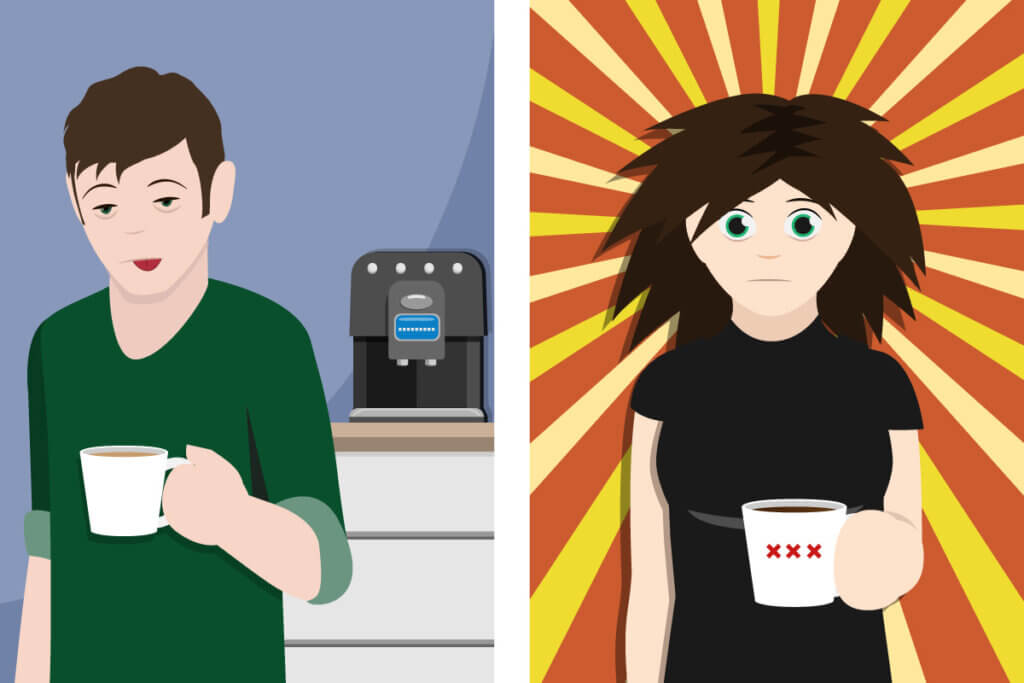
A coffee spoon is also suitable for portioning. The rule of thumb here is: one spoon plus one extra spoon per cup. For five cups, six full spoons are necessary. A lightly heaped tablespoon corresponds to between seven and nine grams, a lightly heaped teaspoon to three to four grams. In the best case, a serving spoon is included.
The right cleaning
With the right care, filter coffee machines have a long life. Cleanliness also contributes to taste. Limescale, coffee residues, and other impurities build up in the machines and affect the quality. If limescale builds up on the heating coil, this not only affects the temperature produced, but also leads to higher energy consumption, as it takes longer to heat up.
If the filter machine has a rinsing or descaling program, users can simply run it at the end of the day so that the machine is ready for the next day. Otherwise, users will have to do it themselves. Beforehand, they should read the manual to find out which cleaning agents are permitted.
Home remedies are usually sufficient for descaling: users fill the water tank completely, add a spoonful of citric acid and run this solution through the coffee machine. Afterwards rinse twice with clean water. Alternatively, vinegar essence or special descalers from the drugstore can be used. Some machines inform their owners via an indicator when descaling is due. Usually, filter coffee machines need to be descaled about two to four times a year. The frequency also depends on the hardness of the water, which can be found out with special test strips or on overview pages of the municipal basic water suppliers on the internet. The harder the water, the more often it needs to be descaled.
Unlike thermos pots, glass pots are usually dishwasher-safe. Removable water containers and permanent filters can simply be rinsed with hot water. For hygienic reasons, the surface of the housing should also be wiped with a dry or damp cloth at regular intervals. Since the machine parts inside don’t come into contact with the coffee, maintenance and care are much easier than with fully automatic coffee machines.
The alternatives
Nowadays, coffee is prepared in a wide variety of ways. In addition to the classic filter coffee machine, which is particularly suitable for families and frequent drinkers, capsule and pad machines, espresso makers, and fully automatic machines are also used, depending on taste preferences and intended use.

Capsule and pad machines: for quick coffee enjoyment
Machines for single-serve coffee container prepare the coffee quick and uncomplicated. As the aroma-sealed capsules or pods are already portioned, there is no need to grind or measure the powder. Users simply insert the capsule or pad of their choice, press the start button, and within a few seconds the coffee flows into the cup. With some pad machines, it is even possible to prepare two drinks at once. Some models are also equipped with a milk frother. While the used pad usually goes in the organic waste, capsules have to go in the household waste, which doesn’t exactly make them environmentally friendly. Since they contain both plastic and aluminium, they generate hardly degradable mountains of waste per year. In addition, the follow-up costs due to the constant repurchase of the comparatively expensive coffee pods or capsules are much higher than with other variants.

Portafilter machines: for traditional connoisseurs
The traditional espresso machines, also called portafilter machines, mean real coffee enjoyment. Users fill the powder of their choice into the portafilter, screw it onto the machine and can brew the coffee or espresso in a few seconds at the touch of a button. Unlike pad and capsule machines or fully automatic machines, portafilter machines are only semi-automatic. A milk frother is often included. Although the purchase price of a portafilter machine is high, the follow-up costs are very low. In addition, espresso machines excite discerning connoisseurs of good coffee with an aromatic taste and a fine crema.
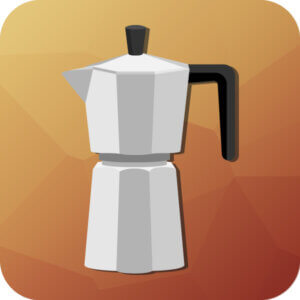
Moka pot: for passionate fragrant lovers
Lovers of fragrant coffee prefer to prepare their favorite hot drink by hand. With a moka pot, a highly aromatic Italian-style coffee is particularly successful. The device consists of two parts and works on the basis of the steam principle. Users simply place the maker on a hotplate, where the heat causes the pre-filled water to evaporate and press through the powder in a few seconds. The coffee collects in the upper container, from where it can now be transferred into a cup.

French press: for the strong aroma
Brewing with a cafetiere, also called a French press or coffee plunger, is a quick and uncomplicated method. First, users put the coffee powder into the glass container, then they mix it with hot water and after about four minutes they slowly press the plunger down to separate the coffee from the powder. As the coffee powder is permanently in contact with the water, in this brewing technique, before being separated by a sieve rather than a fine-pored filter, the result is a strong, full-bodied aroma.
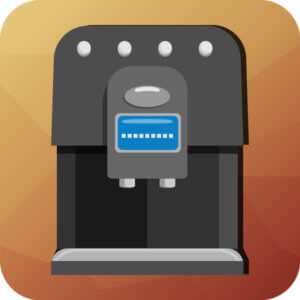
Fully automatic coffee machines: for all-round care
With this multi-talented coffee machine, you can conveniently prepare a wide variety of coffee specialities. The beans are in a container and are ground in portions by the integrated grinder directly before the brewing process at the touch of a button. The strength, amount of water, and temperature can usually be adjusted individually. Many models also have a milk frother for making milk-based creations, a powder compartment for a second type of coffee, and a display with menu navigation. Due to the brewing technology and the milk frothing system, regular cleaning is particularly important here to prevent germ formation.
Individuals or occasional drinkers in particular are well advised to use a capsule or pad machine. Coffee machines with portafilter are suitable for discerning coffee drinkers. The uncomplicated moka pots are worthwhile for anyone who values an inexpensive, quick solution. Those who prefer a strong aroma in their coffee can turn to a French press. Fully automatic coffee makers are the best choice for users who like to experiment and enjoy a wide selection. For larger households that want to invest less money and time, however, the good old filter machines are more suitable.
Images 1-14: © FinalCheck

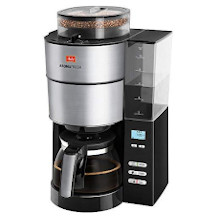

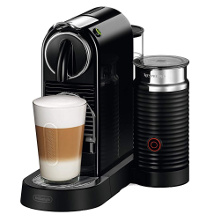
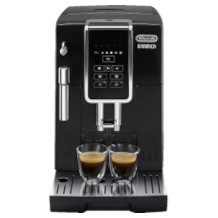
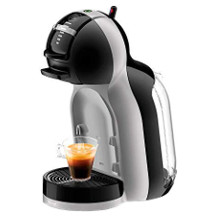

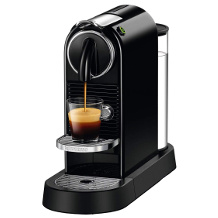
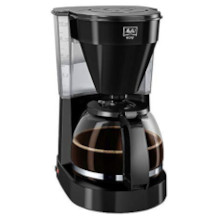











 7,156 reviews
7,156 reviews
